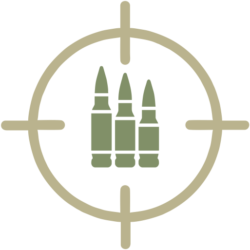A lot of folks hear about annealing brass cartridges cases, and just assume it must be something that is hard to do. Once you understand what annealing is, why it is done, and what tools you need to do it, annealing is actually a fairly simple process.
Annealing means heat treating the neck and shoulder of a brass cartridge case to make it softer (ductile) so it will seal the chamber during firing. Unlike steel, brass gets softer as you heat treat it, not harder. What makes brass cartridges become harder is firing the cases in your rifle, and then working them in your reloading dies. Both those operations will cause brass to harden, which leads to the brass becoming brittle causing splits and cracks in the cases.
One reason to anneal your brass is to extend the life of the case, so you can reload it more times. One of the first signs that it is time to anneal is splitting at the case mouth, or cracks in the neck or shoulders of your brass. Another thing to look out for is if it suddenly takes more pressure, or less pressure, to seat bullets into the cases than it used to. Once symptoms like these appear, many shooters think the brass is no longer usable and discard it. But as long as the primer pockets are still tight, these cartridge cases are still useable – if you anneal them properly.
Another reason to anneal brass cases is if you are reforming them from a larger case to a smaller case, such as in making wildcat cartridges. When you set the shoulder back on the case, the neck walls will thicken from the shoulder’s extra brass, which will harden up as you work it into the new configuration. This area of the worked brass needs to be annealed so that when it is fireformed, it will seal the chamber and properly form out to the new configuration.
There are some studies that indicate that if the brass in annealed, there is an improvement in the accuracy achieved by the shot because of the consistency achieved in the neck tension of the case.

Induction annealing is the process of softening the necks of cases, through heating in an electrically contactless manner. This is achieved through placing the cases within a magnetic field, which induces eddy currents within the brass. Technically, the lower the resistivity of the brass, or the higher the intensity of the magnetic field, the greater are the eddy currents and, consequently, the greater the heating effect. There is no heating element as such; the only thing to get hot is the case. The magnetic field is focussed to maximise the eddy currents and heating in the location where it is specifically required, i.e. the neck and shoulder.
No matter why you anneal your cases, the key to proper annealing is to not overheat the cases. When you use a flame to heat the neck and shoulder, make sure that you do not bring the brass to a bright, glowing red colour. If the brass reaches a bright, glowing red, you have most likely overheated the case, and it will be unsafe to fire, even if you quickly quench it with water.
After a case has been properly heated and then quenched, it is then ready for the balance of the reloading operations. Here is a quick tech tip for those of you wondering what properly annealed brass should look like when it’s done. Just take a look at a new piece of Lapua brass, if it’s available to you. Lapua always leaves the annealing colour on the case so that the reloader can see that the case has been properly annealed.
Induction annealing is the latest and most consistent, safe and effective means to anneal cases.
As always, if you have any additional questions, please do not hesitate to call us or email us on the contact details.





